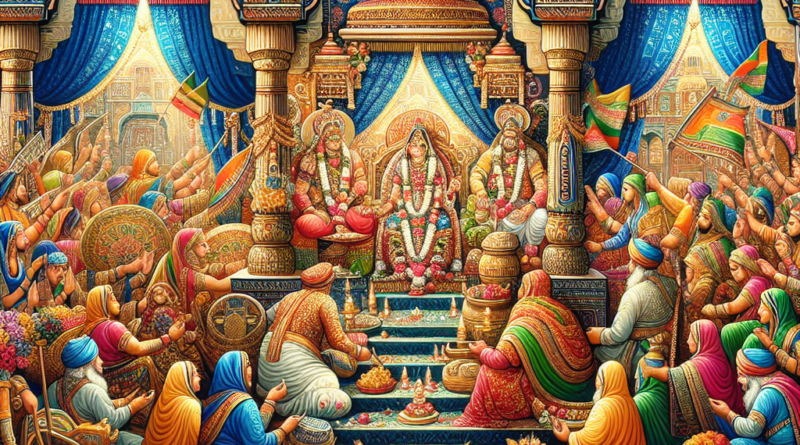Enchanting and Sacred Hindu Rituals Revealed
Title: Exploring the Rich Tapestry of Hindu Rituals: The Cultural Significance in Hindu and Rajput Traditions
Sacred Hindu Rituals Revealed:
Hinduism, the world’s oldest living religion, is a tapestry of diverse beliefs, practices, and rituals that have been passed down through generations. These rituals play a crucial role in the lives of Hindus, offering a way to connect with the divine, honor ancestors, and uphold cultural traditions. Among the various sects and communities within Hinduism, the Rajputs stand out for their unique blend of martial valor and deep-rooted cultural practices. In this article, we will delve into the significance of Hindu rituals, with a specific focus on how they are observed in both Hindu and Rajput traditions, exploring their historical context and contemporary relevance.
Historical Context:
The history of Hindu rituals dates back thousands of years, with ancient scriptures such as the Vedas providing a foundational guide for religious practices. These rituals were often closely tied to the cycles of nature, with ceremonies performed to invoke blessings for good harvests, protection from natural disasters, and overall well-being. Over time, these rituals evolved to encompass various aspects of life, from birth to death, with each stage marked by specific ceremonies and rites of passage.
In the context of Rajput culture, rituals played a central role in upholding the values of honor, courage, and loyalty that defined the warrior ethos of the Rajput clans. From elaborate coronation ceremonies to rituals honoring the valor of ancestors, every aspect of Rajput life was imbued with symbolic significance. Rajput rulers were known for their patronage of temples and priests, ensuring that rituals were performed with utmost reverence and grandeur.
Cultural Significance:
Hindu rituals hold profound cultural significance, serving as a means to foster a sense of community, tradition, and spiritual connection. One of the key aspects of Hindu rituals is the concept of ‘dharma,’ which encompasses one’s duty, righteousness, and moral obligations. By performing rituals in accordance with dharma, individuals seek to align themselves with cosmic order and uphold the values that govern their lives.
In Rajput culture, rituals are deeply intertwined with notions of honor, lineage, and martial prowess. Ceremonies such as ’tilak’ (marking of the forehead), ‘havan’ (fire ritual), and ‘kanyadaan’ (giving away of the bride) are not just symbolic gestures but reflections of the values that define Rajput identity. These rituals serve to reinforce the bonds of kinship, honor the sacrifices of ancestors, and invoke blessings for future generations.
Contemporary Relevance:
Despite the passage of time and the winds of change, Hindu rituals continue to hold immense significance in contemporary society. In an increasingly globalized world, where traditional customs often clash with modern values, rituals offer a sense of continuity and stability. For many Hindus, performing rituals is a way to stay connected to their roots, preserve cultural heritage, and seek divine blessings for prosperity and well-being.
In the context of Rajput communities, rituals serve as a link to their illustrious past and a reminder of the values that have sustained them through centuries of upheaval. While some rituals may have evolved or adapted to changing times, the core principles of honor, valor, and kinship remain deeply ingrained in Rajput culture. Today, Rajput families continue to observe traditional ceremonies with reverence and pride, passing down age-old customs to the next generation.
Conclusion:
In conclusion, Hindu rituals are not just a set of prescribed practices but a living embodiment of the rich tapestry of beliefs, traditions, and values that define Hindu and Rajput culture. From birth to death, from daily worship to grand ceremonies, rituals form the bedrock of religious and cultural life for millions of Hindus around the world. In the context of Rajputs, rituals serve as a testament to their proud heritage, embodying the spirit of courage, loyalty, and honor that has defined their legacy. By understanding the historical context and cultural significance of these rituals, we gain a deeper appreciation for the timeless traditions that continue to shape Hindu and Rajput identity in the modern world.

